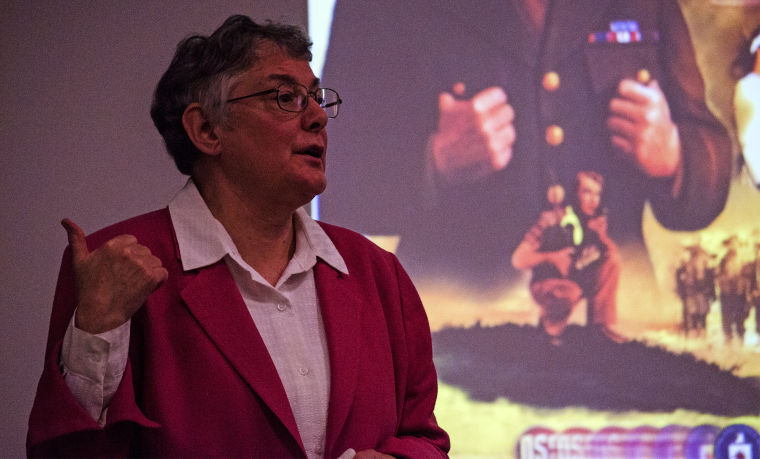
CIA historian Linda McCarthy
Linda McCarthy believes in the old slogan, “Behind every great man is a great woman,” and she argues that the saying even holds true for the CIA.
Last night, McCarthy, a historian for the CIA, went through a montage of historical female figures who took part in American espionage since the American Revolution. Speaking before about 10 students in Jimenez Hall, McCarthy said she owes these female spies a personal debt because they dared to work at a time when it was not “fashionable” for a woman to participate in war efforts.
During the Revolutionary War, former President George Washington had a superior intelligence operation — “There’s more to him than a cherry tree,” McCarthy joked — and everyday women were major participants.
The women would hang their laundry in a certain way to signal whether a British ship was approaching, and one woman, identified about three years ago as Betty Lloyd, revealed British Maj. John Andre’s plan to take over the fort at West Point. Thanks to Lloyd, West Point remained in American possession.
“They had women agents positioned at the other side of the Hudson in New Jersey,” McCarthy said.
Some of the other names McCarthy introduced were already well-known among the students for reasons other than their roles as spies.
For instance, before she became a world-famous chef, Julia Child worked with the Office of Strategic Services during World War II. She even helped develop a shark repellent to keep sharks away from underwater explosives used against the German U-boats.
But one of the greatest female spies in U.S. history came from Baltimore, McCarthy said. During World War II, Virginia Hall worked with British operatives and assisted with the invasion of Normandy in 1944.
But because of a malfunctioning trigger, she accidentally shot herself in the foot and had her leg amputated. With a wooden prosthesis, she went down in history as the limping lady of the OSS.
“Woman and handicapped,” McCarthy said. “You wouldn’t think those would become America’s greatest female spy, but she did.”
Even today, McCarthy said, women deal with certain situations better than men. As for her, she got into the business after she was inspired by books about the history of espionage.
“While I loved the books, I was really into the gizmos,” McCarthy said. She even presented a few of those “gizmos” to the students. One was a camera used to take photographs from planes during World War II. Another was a hollow pencil containing a sharp weapon, which spies would send in packages to prisoners of war so they could use them to attack their guards and escape.
While McCarthy’s audience was small, several attendees said they were inspired by the presentation.
“It was great to see those who made incredible contributions to various war efforts get recognized for what they did,” sophomore geography major Megan Williams said. “Definitely makes me want to follow their ways.”
Male attendees also said they learned a great deal about women’s roles in U.S. military history.
“You just hear [women] typed and stuff like that, but to hear they actually went out on the field was encouraging,” said senior history major William Treiber.



